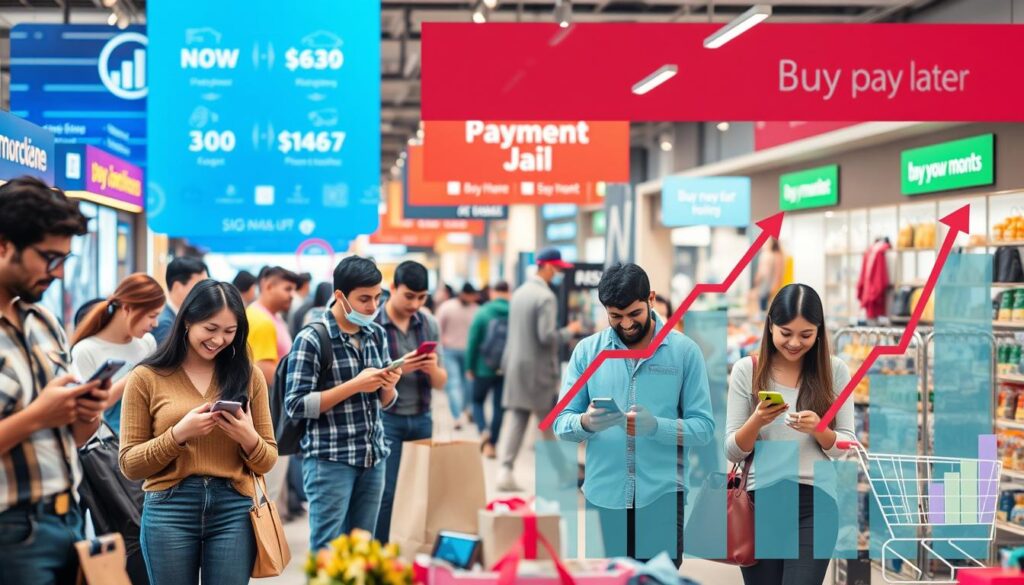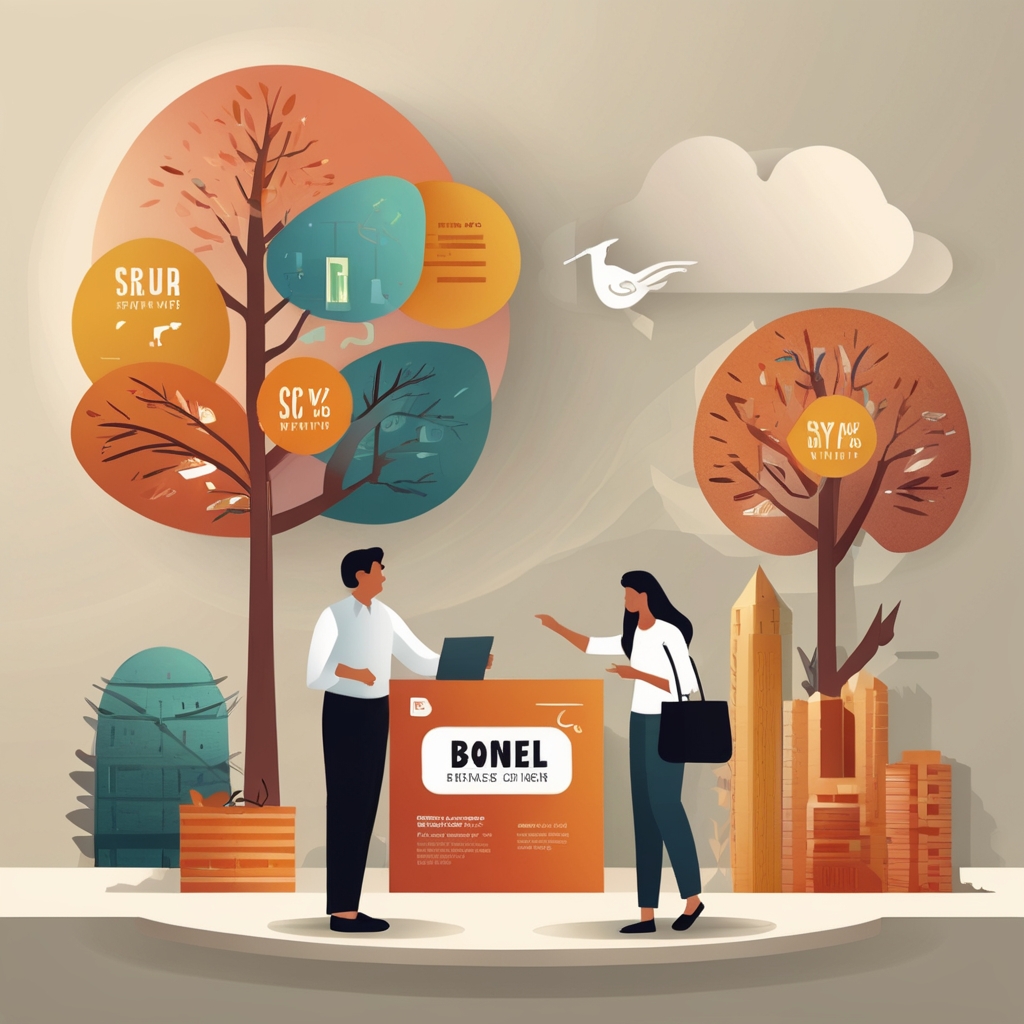Exploring the Rise of Buy Now Pay Later Services
The rise of buy now, pay later (BNPL) services has changed how we shop. More and more people are using BNPL because it lets them buy now and pay later. This is different from old credit systems because it doesn’t charge interest if paid back on time.
This new way of paying makes shopping online faster and easier. It shows how important quick and easy payments are for customers.

BNPL services are becoming more popular because they offer easy financial solutions. This change shows how shopping habits are evolving in our digital world.
Key Takeaways
- BNPL services are increasingly favored for their flexibility and ease of use.
- These alternative payment solutions help consumers manage their budgets more effectively.
- The popularity of BNPL financing is reshaping traditional credit models.
- Digital shopping payment methods are prioritizing customer convenience.
- Understanding the rise of BNPL can provide insights into future market trends.
Understanding the Rise of Buy Now, Pay Later (BNPL) Services
Buy Now, Pay Later (BNPL) services are growing fast. This shows big changes in how people pay and shop. Knowing how BNPL works and who’s leading the way helps us see why it’s growing.
What is BNPL and How Does it Work?
BNPL lets you buy things now and pay later in small steps. You choose BNPL at checkout and pay a bit then. The rest is paid in installments, usually without extra fees, if you stick to the plan.
This makes shopping more affordable and accessible. It lets people spend more because they can pay over time.
Key Players in the BNPL Market
Many companies lead the BNPL market. They offer new ways to pay that meet different needs. Names like Klarna, Afterpay, and Affirm stand out with their unique features and payment plans.
This competition drives the growth of BNPL. It pushes companies to keep improving their services.
The Technological Advances Fueling BNPL Growth
Technology is key to BNPL’s success. New systems for checking credit, better mobile apps, and fast transaction processing make shopping easier. These advances change how we shop, making BNPL a big part of the future of payments.
BNPL Market Growth and Consumer Trends
The BNPL market has grown a lot, changing how we finance things. More people are using BNPL, showing a big change in how we pay for things. Looking at BNPL adoption rates helps us understand what people want.
Statistics on BNPL Adoption Rates
More and more people are using BNPL, with about 36% of consumers trying it out. Young people, especially millennials and Generation Z, are leading this trend. They use BNPL a lot during big shopping days like Black Friday and Cyber Monday.
This shows that more people prefer BNPL over buying things the old way.
Payment Flexibility Trends Shaping Consumer Behavior
People want to pay for things in ways that fit their budgets. With more online shopping, they want to manage their money better. BNPL lets them do this by spreading payments out without extra interest.
This is great for those who are careful with their money. Retailers need to understand this to keep up with the BNPL trend.
Comparison with Traditional Consumer Credit Options
BNPL has big advantages over traditional credit. It’s faster and easier to get, reaching more people. Traditional credit can be slow and hard to get, turning people off.

Conclusion – Exploring the Rise of Buy Now Pay Later Services
The rise of buy now, pay later services (BNPL) is changing how we shop. It shows we want more flexibility and ease in our purchases. BNPL has become a key part of shopping today, not just a passing trend.
Looking to the future, BNPL services are expected to grow even more. This growth will come from new tech and what shoppers want. Retailers who offer BNPL will likely see more loyal customers and better sales.
The shift to BNPL is changing how we shop online and in stores. As BNPL evolves, it will be interesting to see how it changes how we buy things and how stores sell to us.
FAQ
What is Buy Now, Pay Later (BNPL)?
Buy Now, Pay Later (BNPL) lets you buy things now and pay later. You can spread out payments over time. It’s a flexible way to shop without high interest, making it a good choice compared to traditional credit.
How does BNPL work?
With BNPL, you choose this option at checkout. You pay a small amount upfront. Then, you pay the rest in installments over weeks or months, based on the service’s rules.
What are the main advantages of BNPL?
BNPL offers flexibility in payments and helps with budgeting. It’s convenient for managing purchases online. It also lets you buy more without immediate financial pressure.
Who are the key players in the BNPL market?
Big names in BNPL include Afterpay, Klarna, and Affirm. They’ve helped make BNPL popular and shaped online payment options.
How has technology impacted BNPL services?
Tech has boosted BNPL by improving mobile payments and online shopping. It’s now easier for people to use BNPL services during their online shopping.
What are the current adoption rates for BNPL services?
About 36% of people have tried BNPL at least once. Use of BNPL goes up during big shopping events like Black Friday. This shows BNPL is becoming more popular.
How does BNPL compare to traditional consumer credit options?
BNPL is different from traditional credit because it doesn’t require credit checks or high interest. It’s appealing to young shoppers who don’t want to build up credit card debt.
What trends are shaping the future of BNPL?
BNPL is expected to grow as more online stores offer it. The move towards a cashless society and more digital shopping will also help BNPL grow.


Pingback: Biometric Security: The Future of Access Control
Pingback: Maximize Your Travel Rewards: Tips for Expansion